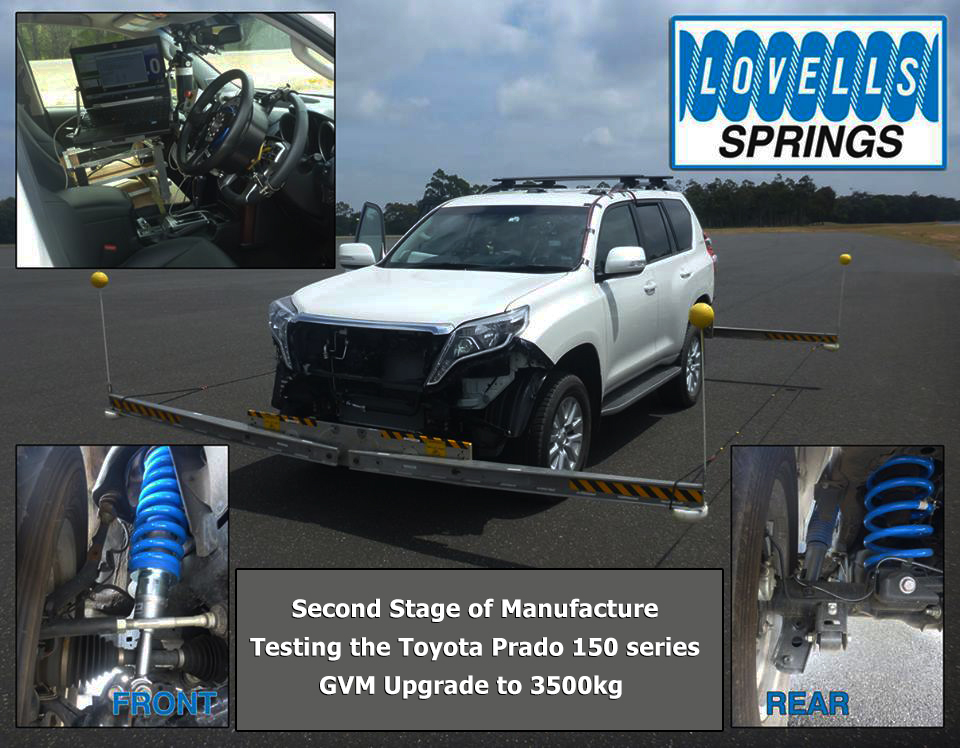Factory 3500kg Towing Capacity Does Not Deliver What It Promises
HOW YOU ARE BEING MISLEAD WITHOUT EVEN REALISING
BEFORE WE START, LETS EXPLAIN WEIGHT CATEGORIES
Gross Vehicle Mass (GVM)
GVM is the maximum a vehicle can weigh when fully loaded. This includes the vehicle, all of its luggage, fuel, accessories and passengers. It is specified by the vehicle manufacturer on a plate affixed to the vehicle.
Gross Combination Mass (GCM)
GCM is the greatest possible sum of the maximum loaded mass of a motor vehicle, and any vehicles that may be lawfully towed by it at one time. The GCM on a passenger vehicle is not stamped on any compliance plates - it is specified in the owners manual or upon request from the manufacturer to disclose.
Braked Towing Capacity (BTC)
BTC is determined by the vehicle manufacturer and is based on factors such as the design of the vehicle, the vehicle's rear axle load, the capacity of its tyres and the effect the fully loaded trailer will have on the vehicle's stability, durability and general safety.
Ball Mass (BM)
BM is the downward force from the a-frame of the caravan/trailer which when connected is applied to the vehicles tow bar.
Tare Mass (TM)
This is the weight of the vehicle as it leaves the production line ready for delivery to the dealership display window - so fully stock, unloaded without aftermarket accessories and even without a tow bar.
Payload
This is the total difference between the GVM and TM. This includes any accessories that were fitted after the factory build for example your tow bar, bullbar, winch, dual battery, canopy, roof racks and roof tray. This also includes personal equipment such as clothing, food, water, and tools.
LETS CUT A LONG STORY SHORT
Many 4x4 utes can only tow their advertised 3500kg if the towing vehicle is barely loaded. Why? As explained above a GCM does not necessarily mean the sum of the GVM + Maximum Braked Towing Capacity. The vehicle manufacturer can nominate their own GCM which is less then these two figures added together. This is plain and simple the problem in itself, you are promised a GVM & Braked Towing Capacity (BTC) from the manufacturer but the GCM adds up to less then the GVM + BTC. So you can fully load the vehicle up to its GVM and tow a light trailer, or tow a heavy trailer with minimal load in the vehicle to ensure the lower specified GCM is not exceeded.
FOR EXAMPLE - THE FORD PX RANGER I & II
The Ford Ranger is hyped up to have a 3500kg towing capacity - this truthfully is misleading to the end user.
The vehicle facts:
Tare Mass (TM) 2198kg - source RVCS
Gross Vehicle Mass (GVM) 3200kg
Braked Towing Capacity (BTC) 3500kg
Gross Combination Mass (GCM) 6000kg
Now lets put this 3500kg towing capacity into action, lets connect up our 3.5 tonne caravan to the stock standard out-of-the-box Ford Ranger PX. We know already that the GCM is 6000kg. With our 3500kg towing apparatus connected our remaining GCM has now become 2500kg (6000kg minus 3500kg). So the maximum this car can weight whilst fully loaded with fuel, luggage and passengers is 2500kg. You can see that acheiving our 3200kg GVM is not even possible now. It gets worse, lets now calculate our remaining payload. Remaining GCM of 2500kg minus our TM of 2198kg leaves us with 302kg payload. Remember in this scenario our weights are based on a vehicle that is still a cab chassis from the show room floor. No fuel, no accessories, no passengers, no canopy. Now you are starting to think this cannot possibly get any worse? Wrong - we have not factored the ball mass (BM) into the equation. Generally speaking a caravan requires 10% of the total trailer mass to act as the BM. In our example we are towing a 3500kg apparatus, this would generally have a BM of 250kg-350kg but most commonly a little less then 10%. Lets call the trailer BM 300kg which is a highly realistic figure for a 3.5tonne apparustus. We currently have a remaining GCM of only 302kg, minus the BM of 300kg. That leaves us with 2kg of payload. So unless you are hoping that the car is going to drive itself with 1.9 litres of fuel or so then this you have been mislead by your so called 3500kg braked towing capacity.
HOW IS SECOND STAGE MANUFACTURE APPROVAL ATTAINED
Second Stage of Manufacture (SSM) for GVM upgrade approval is attained by the suspension manufacturer (Lovells) verifying to the Federal body known as the Department of Transport and Regional Services (DOTARS), specifically the Vehicle Safety Standards (VSS) branch of DOTARS that the suspension modification complies with the Australian Design Rules (ADR). The ADRs affected by a GVM upgrade is substaintial and this process can be difficult, costly and slow for the suspension manufacturer.
Lovells must supply comprehensive testing reports supplied by an authorised testing laboratory which show that the brakes & vehicle stability are able to with stand and perform safely with the additional weights. This testing procedure is not a basic brake test; it is an extensive highly complicated test with computer monitoring equipment and is normally carried out on an air field strip. Not only this but laboratory testing of all other vehicle factors that are affected by the ADRs need to be completed for example hydraulic swaybar operation (KDSS) and electronic stability control (ESP).
The VSS branch of DOTARS will review the documentation and vehicle apparutus to confirm that all is above board and correct. Once approved a federal legal certificate is issued to Lovells to allow the manufacture and supply chain for that specific build of vehicle.

Second Stage of Manufacture (SSM) Testing of the Toyota Prado 150 series GVM Upgrade from 3000kg to 3500kg
